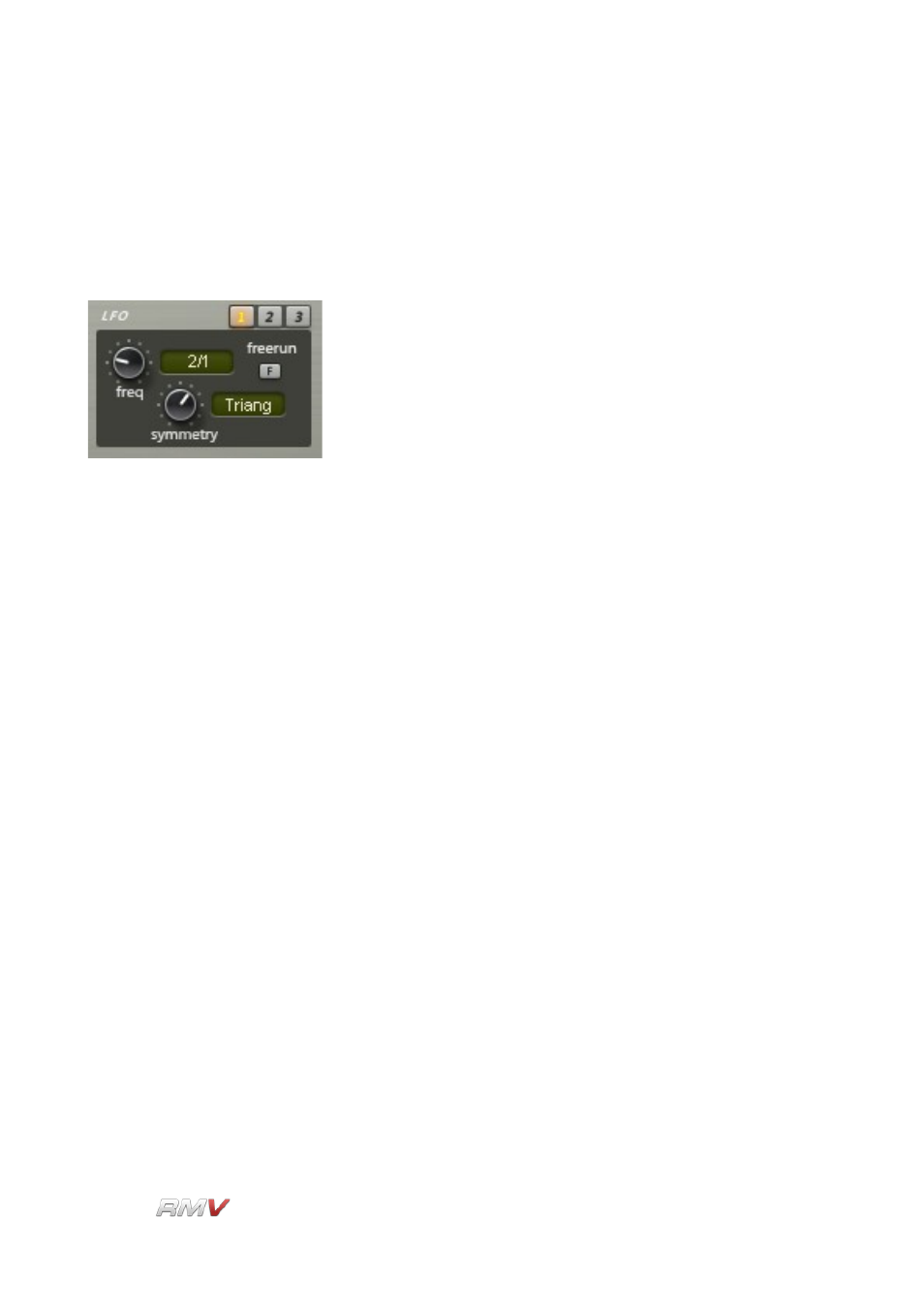LinPlug RMV User Manual
Page 106

Modulation
LFO
An LFO is an oscillator that generates low frequency signals that can be used to modulate
other aspects of the signal. Each RMV Pad has 3 independent LFOs each offering 5 user
parameters. These are: Wave, Freq(Frequency), Symmetry, Sync and Free Run.
The RMV's 3 LFOs are displayed one-at-a-time. To change LFO, click on the desired LFO
Select button (labelled 1, 2 and 3) located above the LFO.
Wave:
The Wave control is used to select one of the RMV's LFO
waveforms. To select a waveform, click on the waveform control.
This opens a popup menu containing 6 LFO waveforms. These
are:Sine, Triang(le), Sawtoo(th), Square, Noise and SamHo (Sample
and Hold). It should be noted that when the Noise and Sample and
Hold waveforms are synced to tempo, they run at a faster tempo than
the other LFO waveforms. For example, if you set Sync to 1/1, use a
tempo of 120 BPM and play a whole note (4 beats), the duration of
one cycle of the regular waveforms (Sine,Triang(le), Sawtoo(th),
Square) will be 2 seconds. However, the Noise and SamHo (Sample
and Hold) waveforms will change their state within 1/8 of 2 seconds
or 0.25 seconds.
Freq(uency):
The Frequency parameter determines the LFO's frequency (in Hz).
This parameter has no effect if the Sync control is active (see below).
Symmetry:
The Symmetry parameter controls the waveform's shape, stretching
it or compressing it as required.
Sync:
The Sync control is used to sync LFO triggering with the current
tempo (see Appendix B for the range of possible Sync settings).
Free Run:
The setting of the F (Freerun) switch to the right of the Sync control
determines whether or not a new note restarts the LFO. If the F
(Freerun) switch is off, and there is a gap between two notes, then
the LFO waveform will restart from its initial value with each note.
LinPlug
Reference Manual 5.0.1
106